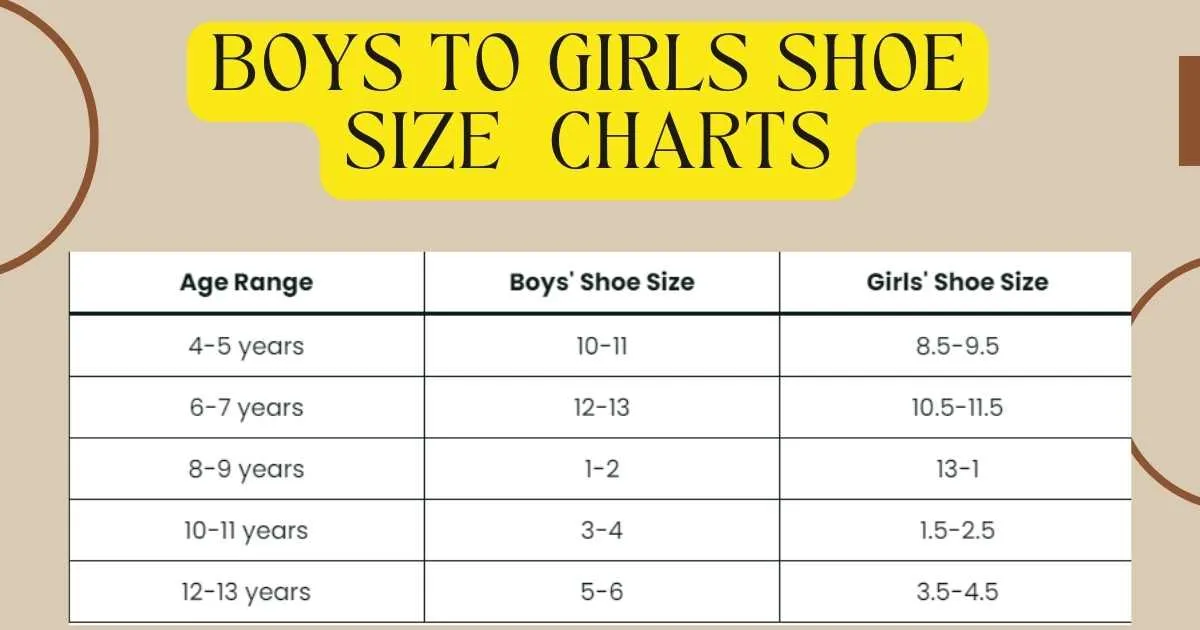When buying shoes for children, determining the right size can be challenging, especially when converting boys’ shoe sizes to girls’ shoe sizes. While children’s shoe sizing charts are generally straightforward, there are key differences between boys’ and girls’ shoe sizes that parents need to be aware of.
Understanding Shoe Size Conversion
Converting boys’ to girls’ shoe sizes can be tricky, but with the right information, it becomes a simple process. Generally, boys’ shoe sizes are slightly larger than girls’ shoe sizes. This means parents need to adjust accordingly. By using conversion charts, you can ensure a proper fit for your child’s shoes, which is essential for healthy foot development.
Boys’ vs Girls’ Shoe Sizes
Boys’ shoes are typically wider and have a larger toe box, whereas girls’ shoes are narrower and have a smaller toe box. This means a boy’s shoe size will generally be larger than a girl’s shoe size for the same foot length.
Conversion Rule of Thumb: Subtract 1.5 from the boys’ shoe size to get the equivalent girls’ shoe size. For example, if a boy wears a size 6 shoe, the equivalent girl’s shoe size would be 4.5.
International Sizing Standards
Shoe sizes can vary by country or region. The most common international sizing standard is the Mondopoint system, which measures the foot length in millimeters and provides a universal sizing standard. The United States does not use the Mondopoint system, so conversions may be necessary when purchasing shoes from international retailers.
Conversion Chart Basics
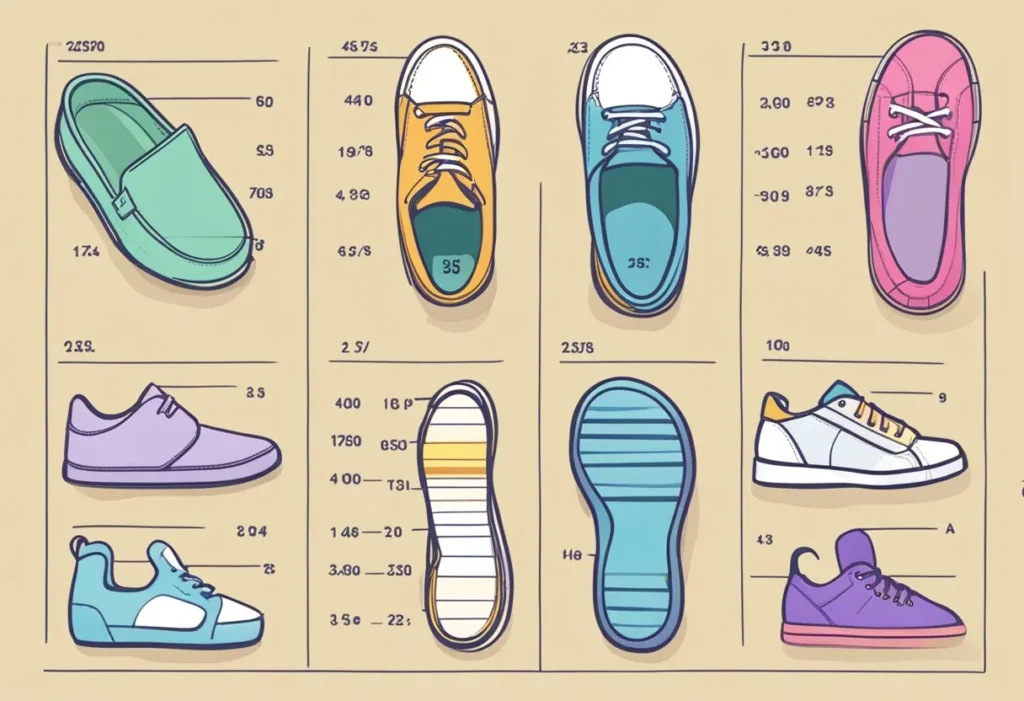
Reading the Chart
Conversion charts are typically organized by age range and show the corresponding shoe sizes for boys and girls. To use the chart, locate the child’s age in the left-hand column and find the corresponding shoe size in the appropriate column for boys or girls.
| Age Range | Boys’ Shoe Size | Girls’ Shoe Size |
|---|---|---|
| 4-5 years | 10-11 | 8.5-9.5 |
| 6-7 years | 12-13 | 10.5-11.5 |
| 8-9 years | 1-2 | 13-1 |
| 10-11 years | 3-4 | 1.5-2.5 |
| 12-13 years | 5-6 | 3.5-4.5 |
Measurement Units
In the U.S., shoe sizes are typically measured in inches or centimeters. To measure a child’s foot, use a ruler or tape measure to measure the length of the foot from the heel to the longest toe. Measure both feet and use the larger measurement to determine the appropriate shoe size.
Step-by-Step Conversion Guide
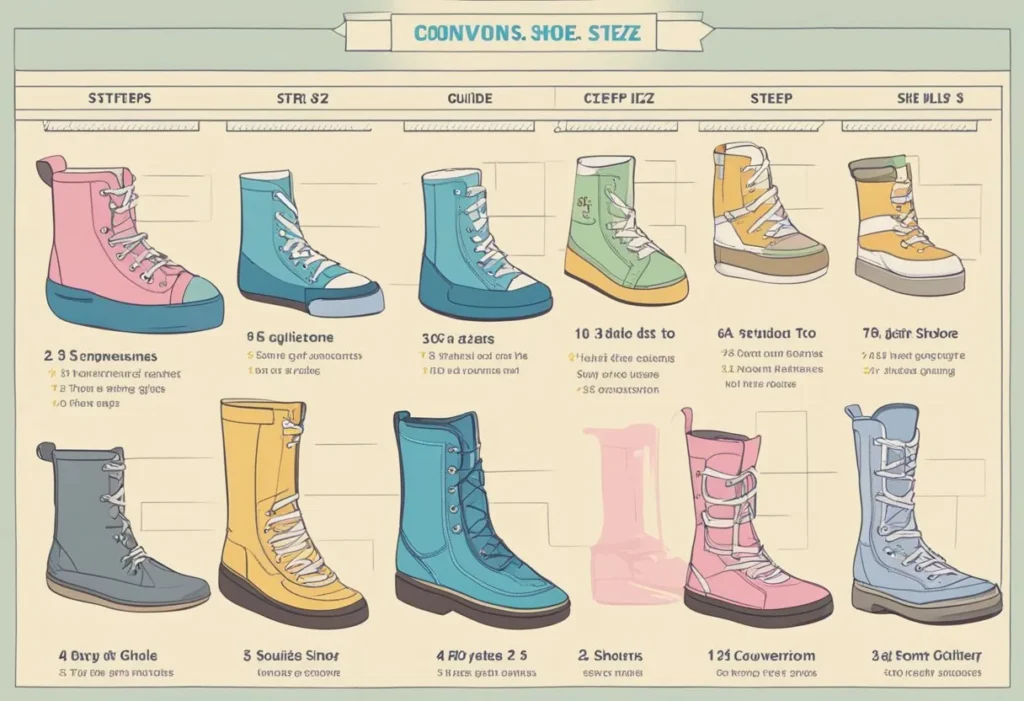
Steps to Convert Boys’ to Girls’ Shoe Sizes
- Measure the Boy’s Foot: Use a ruler or measuring tape to measure from the heel to the longest toe. Measure both feet.
- Use a Conversion Chart: Refer to a reliable conversion chart to find the equivalent girls’ shoe size.
- Consider the Style of Shoe: Different styles may fit differently. It’s best to try on shoes before purchasing.
- Adjust for Age: Children’s shoe sizes are based on age ranges. Ensure you adjust the conversion based on the child’s age.
- Check for Comfort: Have the child try on the shoes to ensure they fit well and have room for growth.
Factors Affecting Shoe Size Differences
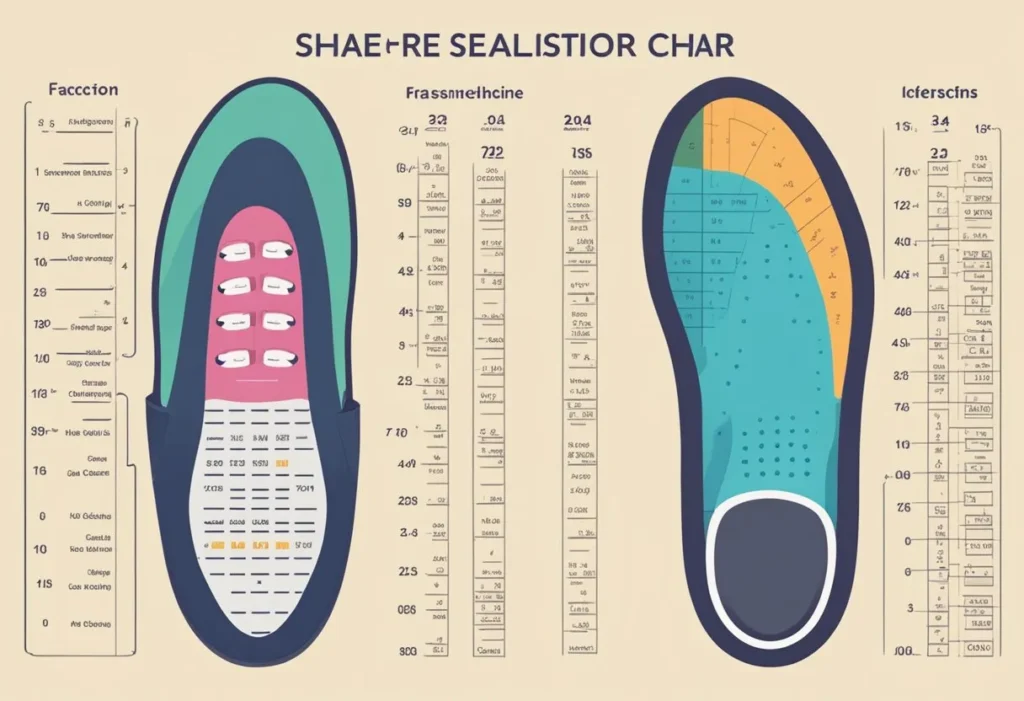
Age Considerations
Children’s feet grow rapidly, and their shoe size can change frequently. Generally, children’s feet grow about half a size every six months until age three, then about one size per year until age ten.
Brand Variations
Different brands may use different sizing systems, making it difficult to find the right size. Some brands may use European sizing, while others use U.S. sizing. It’s essential to try on shoes from different brands to find the best fit.
Common Conversion Mistakes to Avoid
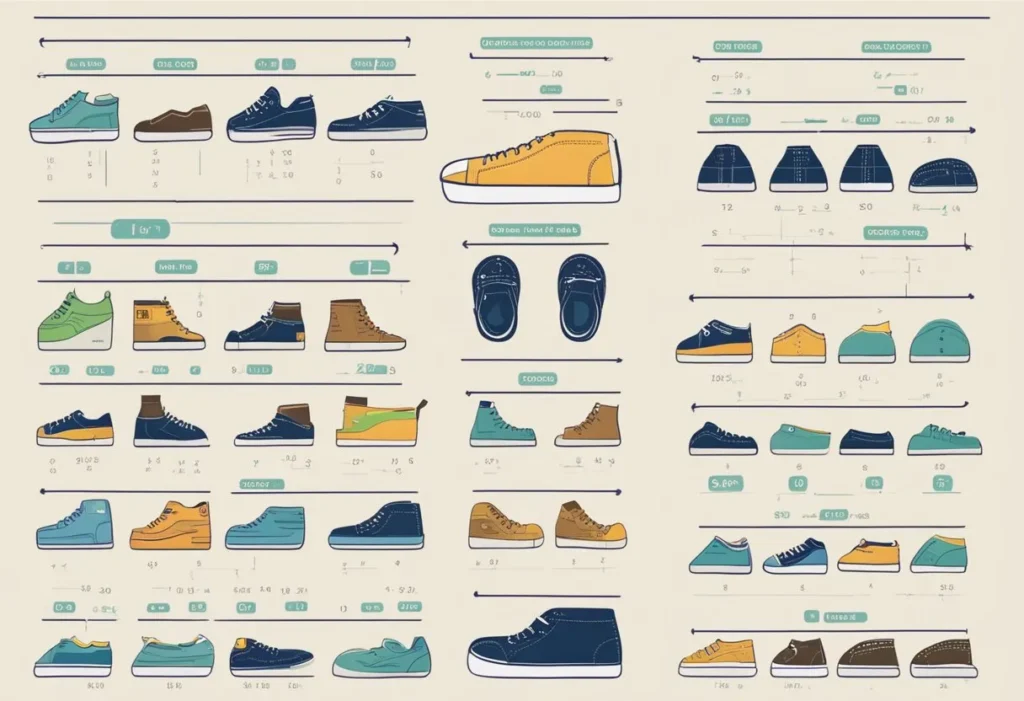
Avoid these common mistakes when converting boys’ shoe sizes to girls’:
- Assuming Sizes are Equivalent: Girls’ shoes are narrower than boys’ shoes, so sizes are not equivalent.
- Relying Solely on Shoe Size Charts: Always measure your child’s foot and compare it to the specific brand’s size chart.
- Ignoring Shoe Style: Athletic shoes may fit differently than dress shoes.
- Forgetting Brand Variations: Shoe sizes can vary between brands. Always try on shoes before purchasing.
Additional Resources
Online Conversion Tools
There are several online tools available that can help convert boys to girl’s shoe sizes. These tools use different algorithms and conversion charts to provide accurate shoe size conversion. One such tool is the Kids’ Shoe Size Converter by shoesize.com. It provides a conversion chart for three age levels: infants (newborn to 2 years), children (2 to 6 years), and youth/junior (6 to 10 years). The tool also includes a brief guide on how to measure a child’s foot.
Another useful tool is the International Shoe Size Conversion Chart by sizechart.com. It provides a conversion chart for children’s shoe sizes from 0 to 13 years. The tool also includes a guide on how to measure a child’s foot and how to convert shoe sizes between different countries.
Printable Conversion Charts
Printable conversion charts are also available that can be used as a quick reference guide. These charts can be printed and kept handy while shopping for shoes. One such chart is the Kids Shoe Size Chart by Nordstrom. It includes a conversion chart for children’s shoe sizes from 0 to 12 years. The chart also includes a guide on how to measure a child’s foot.
Another printable conversion chart is the Kids Shoe Size Chart by famousfootwear.com. It includes a conversion chart for children’s shoe sizes from 0 to 12 years. The chart also includes a guide on how to measure a child’s foot and how to convert shoe sizes between different countries.
In conclusion, these additional resources can be very helpful when trying to convert boys to girls shoe size. It is important to use a reliable conversion chart and to measure a child’s foot accurately to ensure a proper fit.

